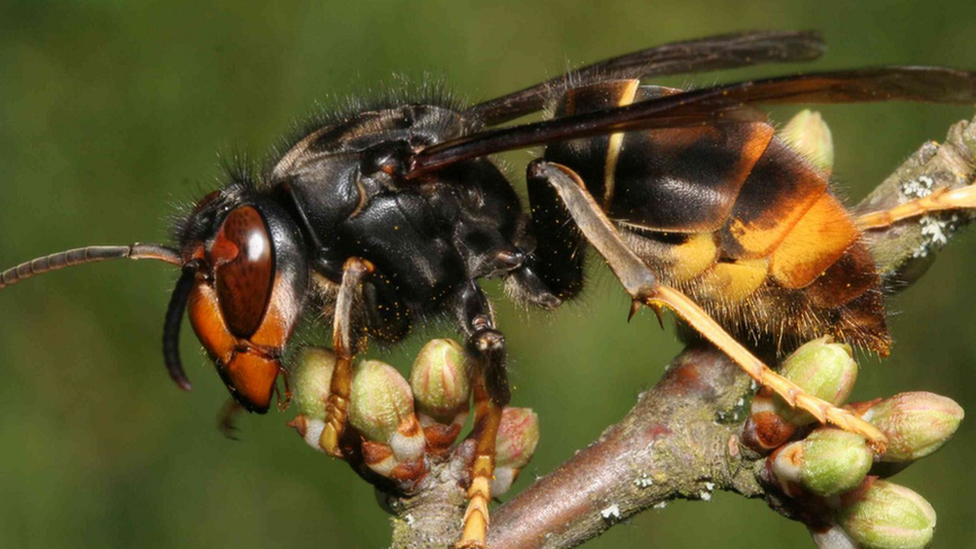Advice given after 38 Asian hornet queens trapped in Guernsey
- Published

Islanders are advised if they spot a hornet they should take a picture and observe where it flies before reporting it to the Asian hornet team
Thirty-eight Asian hornet queens were caught during the annual island-wide spring trapping, the States of Guernsey has said.
It added the number was three times the amount from last spring.
It is thought strong north-easterly winds helped the hornets to fly over from France.
Islanders are advised if they spot a hornet they should take a picture and observe where it flies before reporting it to the Asian hornet team.
The team can then use the information to locate more worker hornets and track them back to the nest.
Search for nests
In the spring five primary nests were located and destroyed.
Primary nests are small nests built by a queen hornet which stays there for about six weeks, raising roughly 100 worker hornets.
Once the nest is large enough, the hornets will leave and move to other areas, such as taller trees, where larger secondary nests can be built.
Islanders are asked to be vigilant over the next few weeks as part of the Track Don't Trample campaign to help locate these nests before the hornets move to secondary nests.
Francis Russell, Asian Hornet Strategy coordinator, said: "As we move onto the Track Don't Trample phase of the annual Asian hornet strategy, please do keep your eyes out for Asian hornets or their nests.
"There are only a few more weeks left to find primary nests, so please do look in sheds, outbuildings and bird houses and if you see anything you believe to be an Asian hornet please report it, along with a photograph if possible."
People can find out more about how to identify an Asian hornet at gov.gg/asianhornet, external.

Follow BBC Guernsey on Twitter, external and Facebook, external. Send your story ideas to channel.islands@bbc.co.uk, external.
- Published12 January 2023

- Published11 August 2022

- Published17 April 2022
